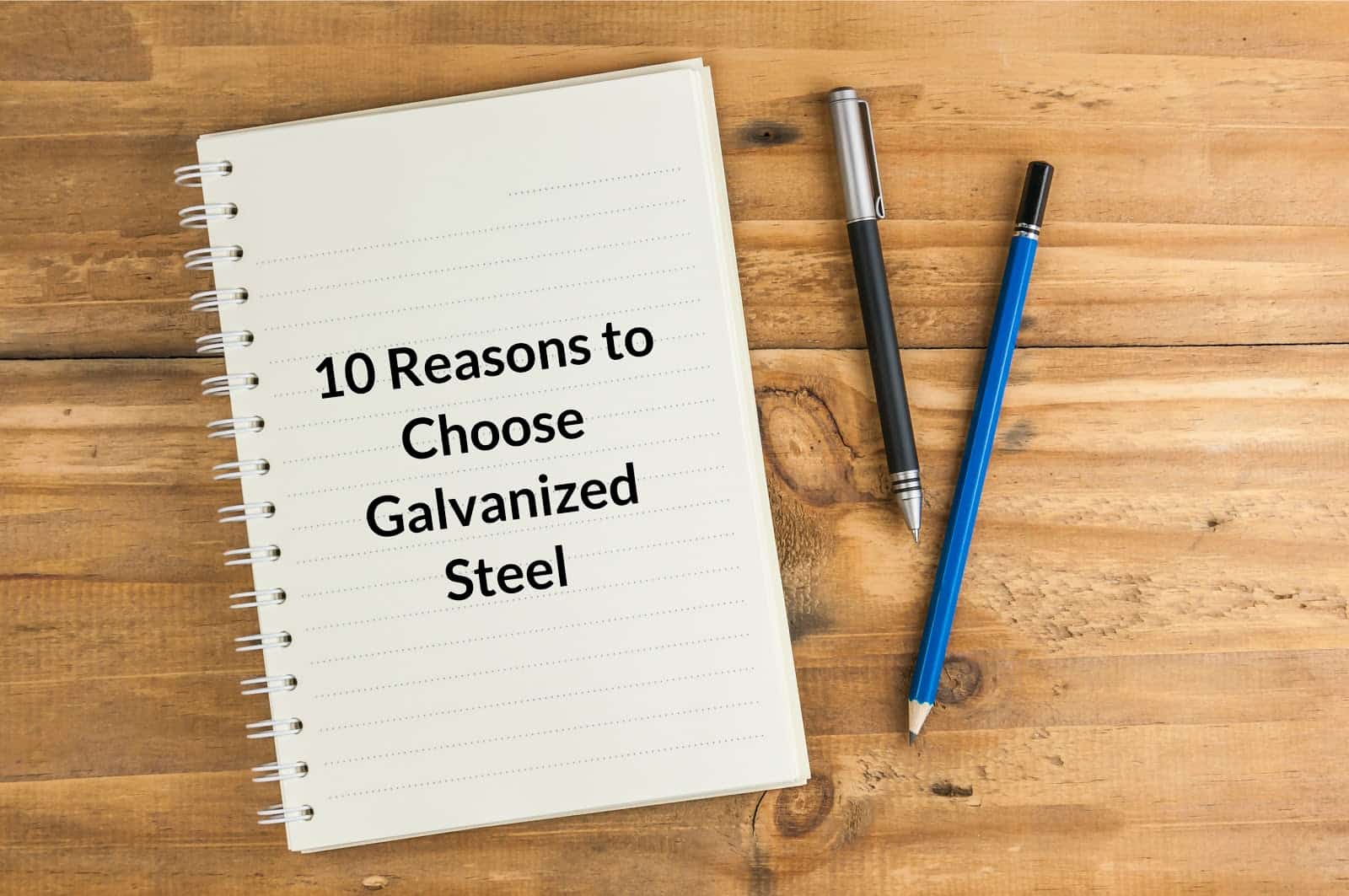Hot-dip galvanizing is a process of applying a layer of molten zinc to steel to give it extraordinary durability, that lowers maintenance and repair costs — for 50, 75, and sometimes up to 100 years — by protecting steel from rust and corrosion. Painting and plastic coatings protect steel as long as they stay intact, but the metal beneath them can begin to rust as soon as these kinds of protective coatings are damaged. Hot-dip galvanizing forms a layer of a zinc-iron alloy topped by a layer of pure zinc that sacrificially protects steel from the forces of corrosion in even the harshest climates and the most chemical-laden environments, while offering many economic advantages even during the construction process.
We have compiled 10 reasons to choose galvanized steel for your next fabrication or construction project. Let’s start with an universally appealing property of galvanized steel.
Low Cost
Many fabricators, architects, planners, and engineers have the impression that, as the “Cadillac of steels,” galvanized steel must be prohibitively expensive. When they get cost quotes for galvanized steel, however, they find that galvanizing is a very realistic construction option.
The costs of paint and powder coatings for steel have increased about 100 percent over the last five years, but the cost of zinc has remained relatively stable. And, when the cost of maintenance is considered, galvanized steel is a clearly less expensive building material. That’s because direct maintenance costs are typically 2 to 5 times the cost of construction materials over the life of a structure. The costs of having a manufacturing facility or a building out of service for maintenance can total, over its lifetime, 5 to 11 times the cost of the building materials.
The expected time to first maintenance for galvanized steel is 50 years or more. That’s a tremendous cost savings compared to other materials.
Low Maintenance
There is not a lot you have to do to maintain galvanized steel. You do have to repair fire damage and mechanical abrasion, but that is equally true for any building material. But, you never have to reapply paints and powders to keep galvanized steel in prime condition, because the protective layer is literally part of the metal beneath it.
Total Protection
Hot-dip galvanizing is a total-immersion process. Every square millimeter of the surface of steel is dipped into molten zinc to form a protective iron-zinc alloy covered by pure zinc. Zinc selectively reacts with corrosive compounds to protect the iron beneath it, and even if a small area of the top coating of zinc is damaged, the iron-zinc alloy still works to fight corrosion.
Self-Healing
Nuts, bolts, screws, rods, and pipes made with galvanized steel are more prone to punishment from contact with corrosive substances and trapped moisture than larger, flat pieces of hot-dip galvanized steel. New coatings protect these parts from corrosion to give them the same longevity as the rest of the structure.
Easy Use
Welding stainless steel is a technical challenge. Welding galvanized steel still requires welding skill, but needs fewer protections and offers a better worker safety profile that most other metals.
Quick Turnaround
Galvanizing plants are used to accommodating the needs of customers who need their galvanized steel and need it right now. And, because hot-dipped galvanized steel is immune to the effects of normal levels of humidity, normal variations in temperature, and UV light, it’s easy to keep an inventory of galvanized parts for immediate replacement needs.
Simple Inspection
The facility that produces your galvanized steel is well versed in the ASTM standards for quality product. And because zinc doesn’t react with unclean steel, visual inspections are very easy to perform.
Reliability
Galvanizing is well-established science. Quality control is built into the manufacturing process through decades of experience, observation, and research.
Long-Lasting
No other metal used in construction and fabrication has up to a 100-year life leading to first expected maintenance. Structures made with galvanized steel last for generations.
Resistance Coating
The galvanizing process bonds zinc to steel with a resistance of approximately 3,600 psi. Tight intermetallic bonding ensures that the protective coating on galvanized steel will last a human lifetime, and considerably more.
Do you have questions about galvanized steel? We would be happy to answer all your questions about everything from repairing galvanized steel to painting it! Call us when we can be of assistance!

